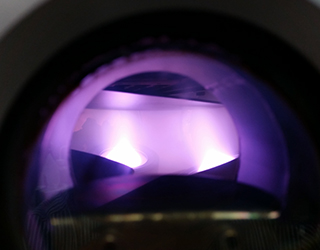
Magnetron sputter epitaxy (MSE, or sputter epitaxy for short) is a pioneering technology for the deposition of III-nitride semiconductors such as aluminum nitride (AlN) and gallium nitride (GaN). III-nitride semiconductors serve as the basis for future high-performance electronic components in applications such as power electronics, high-frequency technology and optoelectronics.
The unique properties of AlN and GaN are high electron mobilities, high thermal conductivities, good thermal and chemical stabilities, very large band gaps and high electric field strengths. These properties are crucial for the efficiency and performance of power electronic devices such as HEMTs (High-Electron-Mobility Transistors), vertical transistors, diodes and LEDs, as they enable improved heat dissipation, higher dielectric strength, faster switching speeds, and higher quantum yields.
 Fraunhofer Institute for Electron Beam
Fraunhofer Institute for Electron Beam